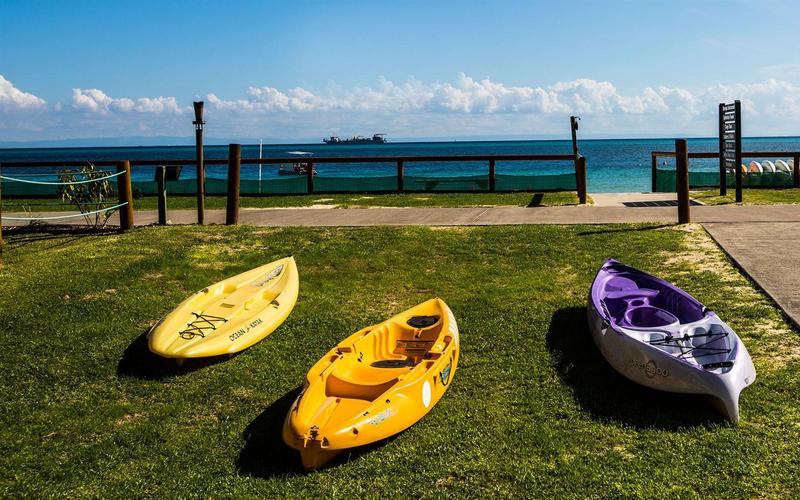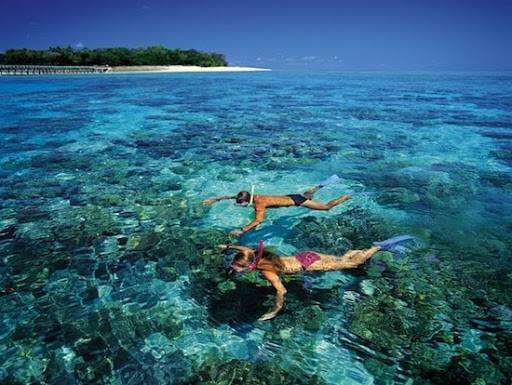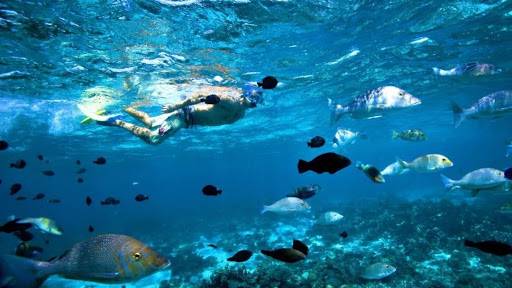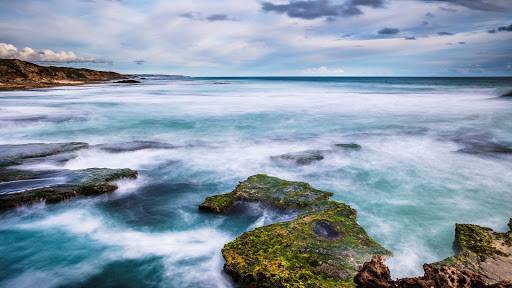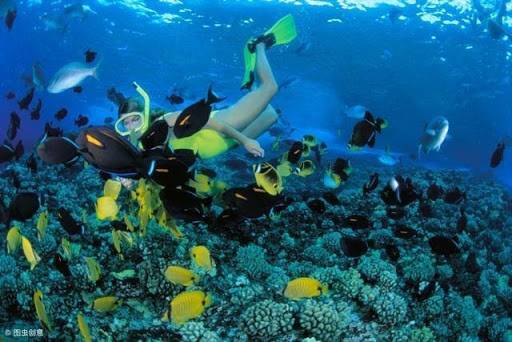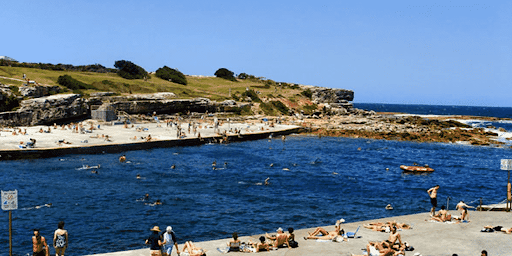Great Barrier Reef
Do not miss the Great Barrier Reef, listed as a World Heritage site. This vibrant natural wonder is so vast that it can be seen from outer space. It stretches along the Queensland coast from Cape York to Bundaberg, spanning nearly 2000 kilometers. You can explore the diving paradises of Heron Island and Lizard Island; or stay in the Whitsundays and take a seaplane to the beautiful Heart Reef. Use Cairns or Port Douglas as your base to visit the coral reefs of Green Island and Emerald Island.
Ningaloo
Join the tropical color party at Ningaloo Marine Park, home to the world's largest fringing reef! Ningaloo Marine Park boasts 200 species of hard coral, 50 species of soft coral, and over 500 species of fish. You can snorkel or dive into the shallow waters at the Bundegi Bombies coral reef sanctuary, surrounded by brightly colored fish; observe sci-fi-like sponges, sea fans, and gorgonians up close at the entrance to Exmouth Gulf; or swim among turtles, manta rays, dolphins, dugongs, batfish, angelfish, clownfish, and many other marine creatures at Lighthouse Bay.
Mornington Peninsula
Dive into the Point Phillip Marine Park and immerse yourself among stingrays, seahorses, cuttlefish, squid, sea urchins, groupers, and weedy sea dragons! This magical marine world is located just an hour's drive from Melbourne on the Mornington Peninsula. You can marvel at the abundance of fish, birds, and seals in the small protected area of Popes Eye; and you can also swim with dolphins in Sorrento.
East Coast Dive Trail
From Binalong Bay to the Tasman Peninsula, you can try diving at 11 top-notch dive sites along the east coast of Tasmania, with visibility ranging from 10 to 40 meters in the clear blue waters. You can also glide past anemones and schools of butterfly perch in the waters of the Governor Island Marine Nature Reserve; dive to explore the abandoned 'Troy D' near Maria Island, jump off a boat into the waters of Waterfall Bay to explore vast coral reefs and caves; navigate through the Fortescue Bay Kelp Forest or around the 'SS Nord', which sank to a depth of 40 meters in 1915.
Darwin Harbour
Dive into the mild waters of Darwin Harbour to explore WWII wrecks and fish-rich coastal coral reefs. The tides here, which change approximately every two weeks, will take you to uncover these underwater secrets. You can swim among the moss-covered hulls of ships that were sunk during the air raids of 1942, now home to starry grouper, wobbegong sharks, sea bass, and barracuda. Alternatively, observe gorgonian corals, soft coral trees, harp corals, vase sponges, and sea squirts in the shallow reefs on either side of the harbour. Enjoy Darwin's famous fiery sunset, then go for a night dive in the warm, calm waters. In the naturally lit waters, you will see pencil sea urchins and sometimes even octopuses.
Visit Clovelly and the adjacent Gordons Bay to enjoy the picturesque rocky waterways and observe colorful fish! This area is only eight kilometers from Sydney's central business district and is teeming with groupers, sunfish, redfin bream, mulloway, large rays, giant cuttlefish, and kingfish. You can night dive in the sheltered Clovelly Pool or the rougher waters at Shark Point on the northern end of Clovelly; dive along the 500-meter underwater nature trail around Gordons Bay, swimming past reefs, sand flats, and kelp forests. Among the common marine life, you will find seagrass fish, sea dragons, wobbegong sharks, and Port Jackson sharks, as well as starfish, sea cucumbers, and sea urchins.
